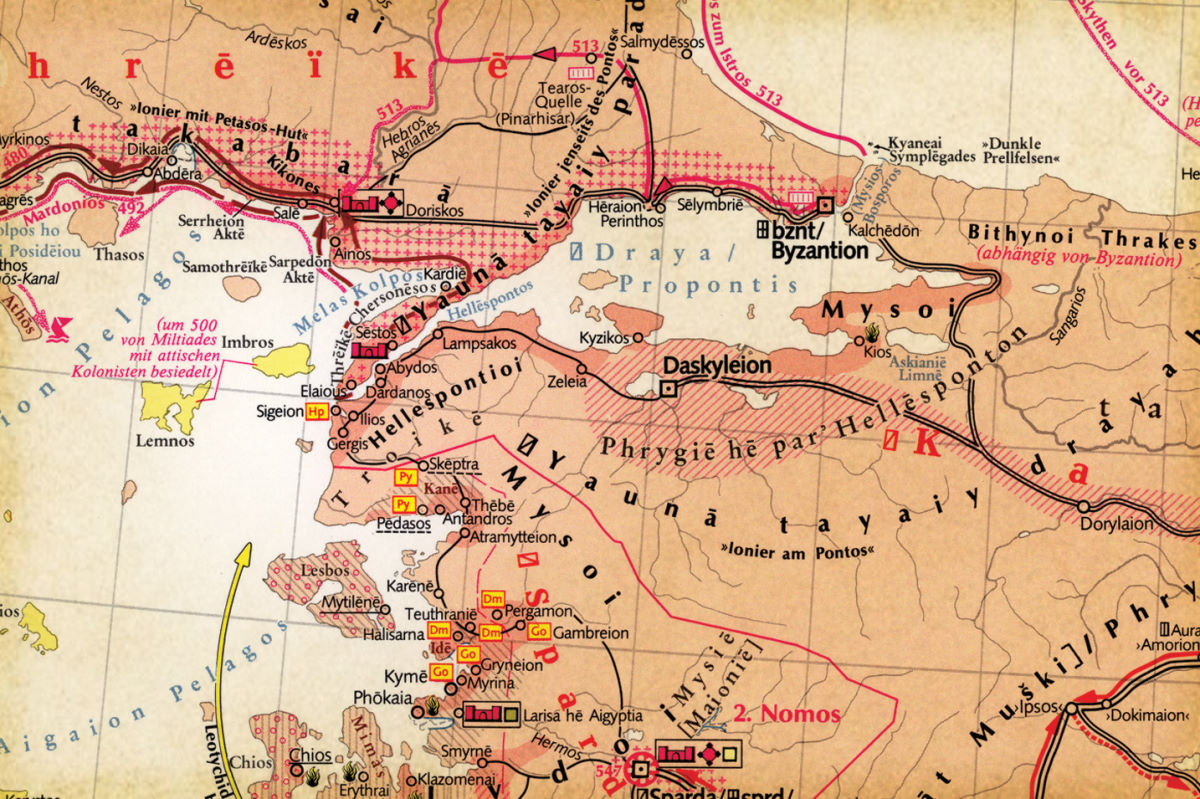The Period Homer telling in Iliad, namely in 1200s B.C.E., in the West of Anatolia, we know from Hitittean documents that there were a series of Luwi states. Wilusa (Ilios/Trois); Seha and its capital Abasa (Ephesos) across the Hermos (Gediz) and Kaikos (Bakırçay) rivers and land of Mira etc.

Because there are no more Hitittean documents after Trojan War (1195-90 Β.C.Ε.), we can't say exactly how these states were collapsed. But thanks to the poet of Iliad, Homer, some informati- ons about late Bronz Age are preserved. If we look from archeo- logical perspective, after Homeric Troy collapsed around 1180's B.C.E, the city was restored by the inhabitants (Troy VIIa). After a short while, this settlement again collapse around 1100s B.C.E (Troy VIIb1). After this period, one observes that a new culture with Balkan elements arises (Troy VIIb2). This period, called in the archeological sense "dark ages", continues until 8th century B.C.E. In that period there was a very weak settlement in Troy. In 8th century B.C.E., while Greek colonial cities were constructed, Greeks build in Trojan remnants a sacred field and after that the city began to be called as Ilion. Some historians from that period give some important informations with regard to political develop- mants after the Trojan War. For example Lydian historian Ksant- hos (5th century B.C.E.) writes that the Phyrigians who were living in Troas, immigrated after war to the Anatolia.
Troy and The Trojans
- 21 What is the meaning of the name Troy/Ilios?
- 22 Who were the trojans?
- 23 Where is Troy?
- 24 Is Troy really found?
- 25 How many cities are there in Troy?
- 26 Which city is the Homeric Troy?
- 27 Was Troy a big city?
- 28 How many people were living in Troy?
- 29 How did Troy collapse?
- 30 What happened after the collapse of Troy?